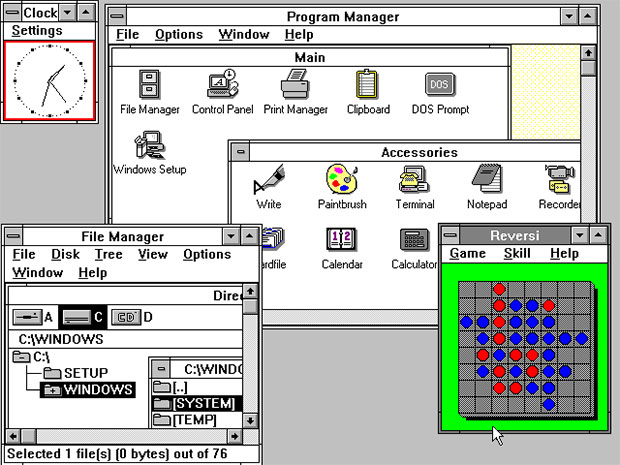Microsoft’s First True Mainstream OS, Windows 3.0, Turns 25 Today
By the time Windows 3.0 debuted on this day in 1990, computers had already become a part of daily life. PCs were getting faster, and Windows offered a friendly user interface that was far more welcoming to new users than having to type commands in MS-DOS. It also spurred the interest of developers, especially once Microsoft released its new Windows SDK, which meant they could spend more time writing programs and less time writing drivers.

- 8086/8088 processor better
- 384KB of conventional memory (real mode), 1MB (standard mode), or 2MB (enhanced mode)
- 6-7MB of free hard disk space
- CGA/EGA/VGA/Hercules/8514/A/XGA graphics
- MS-DOS version 3.1 or higher
It was an interesting time in the history of computing. Notice above that MS-DOS 3.1 or higher was required. That's because Windows 3.0 essentially ran on top of DOS, as Windows wasn't yet a self-contained OS like it is today. This was both good and bad -- good because it was accessible to inexperienced users, and bad because there were still a great many existing programs that needed to be executed from DOS.
Windows 3.0 was quickly embraced by OEMs. It was the first version of Windows that would ship pre-installed on new PCs, which helped Microsoft and its hardware partners compete with Apple, which was making inroads in the education market.
With Windows 10 on the horizon and touch computing now commonplace, it's interesting to look back and see exactly how far we've come in the past 25 years, don't you think?

